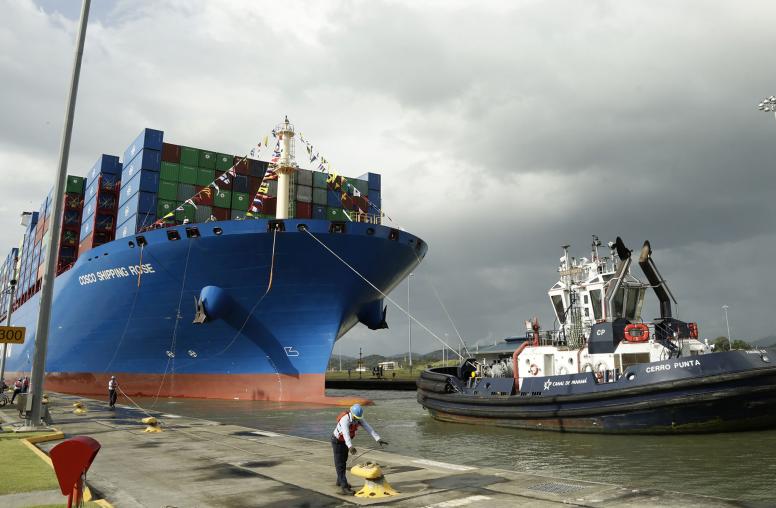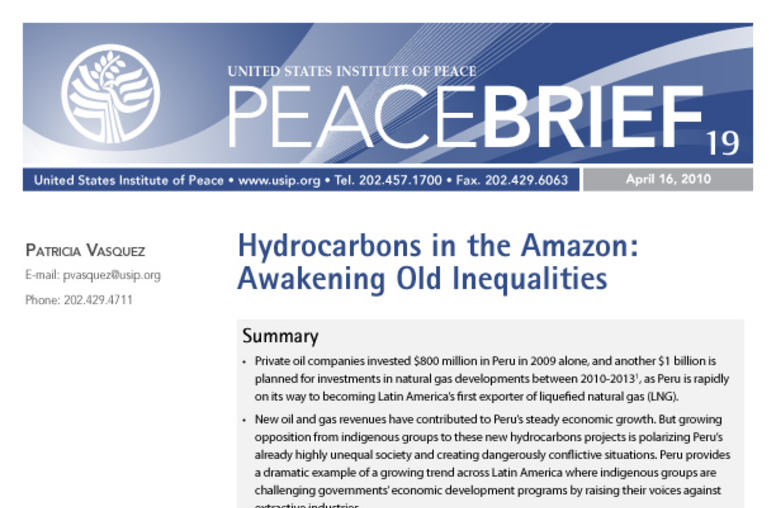It’s Not Too Early to Talk about Plan Ecuador
Can the once peaceful country face down threatening gangs without outside support?
Since his assumption of Ecuador’s presidency on November 23, 2023, Daniel Noboa has faced a surge in violence that culminated the week of January 8th with prison riots, the abduction of police officers, car bombings, looting and the dramatic kidnapping of TV presenters during a live broadcast. Noboa fought back by announcing a state of emergency, opening the way for the armed forces to confront 22 gangs classified as “terrorist organizations.” It is not too early to consider a surge in international support for Ecuador, such as a more modest and community-centered version of the highly successful Plan Colombia, given the strength of transnational and national criminal organizations.

A Retirement Paradise Turned Upside Down by Crime
Ecuador has, over the last two decades, begun to rival Costa Rica as a retirement destination for Americans, a safe haven set between the insurgency-wracked and drug-producing Colombia and Peru. Its president from 2007 to 2017, Rafael Correa, prioritized his social agenda as an attempt to both control criminality and provide an alternative to the perceived “militarization” of public safety in Latin America.
Correa’s government sought to diminish violence by legalizing gangs, recognizing established gangs, such as the Latin Kings, as legitimate social organizations. It maintained channels of communication with gang leaders and provided economic and educational opportunities for gang members in exchange for disarmament and productive engagement with public institutions. There was a dramatic drop in the country’s homicide rate, from 17.51 per 100,000 deaths in 2010 to 5.81 in 2017.
Correa’s successor, Lenin Moreno, maintained the legalization policy, but pivoted hard on gangs, cutting off state communications with leaders. A heavily indebted economy restrained social programs and limited the capacity to properly equip the security forces, and Moreno eliminated the Ministry of Justice and slashed the prison system’s budget as part of a fiscal austerity program.
While things continued to look good enough on the surface, John Feeley, a former U.S. ambassador to Panama, and Peter Romero, a former U.S. ambassador to Ecuador, suggest there was a tsunami developing just over the horizon when “the demobilization of the Colombian guerrillas [in 2016] operating out of northern Ecuador set off a free-for-all to control the movement of drugs in that area,” just as “an uptick in European demand for cocaine and loose visa requirements allowed members of TCOs [Transnational Criminal Organizations]” — including prominent Mexican cartels, dissident Colombian guerrillas and the Albanian Mafia — “to enter the country unimpeded, making common cause with local gangs.” These gangs, once small smuggling organizations operating on the Colombia-Ecuador border, rapidly evolved into complex TCOs as weapons, money, experience and connections flowed in. “Turf wars” created a surge of violence in the coastal ports of Guayaquil and Esmeraldas. Security policy analyst Doug Farah described these foreign elements as “layering themselves into the trafficking structure,” with cocaine now comprising Ecuador’s sixth-largest export with a market roughly valued at $1 billion.
When the leader of one of the most powerful gangs in the country, Los Choneros, was killed in 2020 the organization fragmented and gave way to a highly violent and competitive criminal ecosystem, with rival gangs expanding operations from trafficking to extortion, an enterprise that comes with large amounts of day-to-day violence and intimidation. However, the gangs retained just enough coordination to coerce compliance by the government, through massacres, bomb attacks and prison riots that caused officials to cede control of the penitentiary system.
Meanwhile, Ecuador’s weak economy provided a wealth of young men who were willing to carry out the violent enforcement operations for the gangs, something then president Guillermo Lasso, the center-right reformer who took office in 2021, strongly lamented.
Lasso, and Moreno before him to a certain extent, implemented harder-line policies against the gangs in an effort to reassert government control. These included ambitious raids along the border with Colombia, a softening on gun regulation so that citizens could defend themselves, a state of emergency and harsher penalties for drug offenses. Judges and prosecutors were overwhelmed with thousands of cases, and with mounting violent pressures from criminal organizations to drop prosecutions. But the hole Lasso was digging his country out of was simply too deep. Under political pressure, he disbanded Congress and resigned, calling for new general elections in May 2023.
A New President Faces the Storm
Noboa, the 36-year-old, U.S.-born, George Washington University and Kellogg School of Management-trained business executive, assumed the presidency on November 23, 2023. He will serve for only 18 months, the remainder of the term vacated by Lasso.
The challenges facing him are immense. The homicide rate has gone from 5.81 deaths per 100,000 inhabitants in 2017 to 40, with 7,592 killings in 2023. Indeed, the recent presidential contest itself was marred by violence, as reform-minded candidate Fernando Villavicenio was brazenly killed in August 2023 and six Colombian suspects in the assassination were themselves later murdered in prison.
And violence is just the visible part — Ecuador ranked 101st out of 180 in Transparency International’s 2022 Corruption Perceptions Index, and 103rd out of 140 in the World Justice Project’s 2022 Rule of Law Index. A recent large-scale investigation conducted by Ecuadorian Attorney General Diana Salazar, “Caso Metástasis,” exposed the reach and infiltration of drug trafficking organizations into Ecuador’s state institutions, leading to the arrest of 31 judges, police officers and other state officials with links to these organizations.
Then there are the prisons, where violence and corruption blend seamlessly. Some 460 prisoners have been killed since 2021, as gang leaders have turned prisons into their de facto headquarters, coordinating and managing partnerships with foreign criminal organizations while sending orders to local chiefs. Overcrowding and mass incarceration have been exploited by gangs to increase their membership, by either violently coercing new inmates into their ranks or providing incentives such as protection and privilege to entice their support. Indeed, Noboa’s initiative to militarize the country’s prisons and embark on an ambitious penitentiary reform process contributed in part to the recent violent crisis, with gang leaders perceiving such policies as attacks on their organizations and private interests.
Is There a Need for a Plan Ecuador?
The rapid and dramatic demise in Ecuador’s security, with seemingly no end in sight, led former U.S. ambassador to Ecuador, Todd Chapman, to question recently whether it is time to consider a largescale, long-term commitment to improving Ecuador’s institutions through something akin to the successful Plan Colombia to the north — a tailored “Plan Ecuador.” The strength of such a plan is severalfold.
It can open the door for technology and better armaments that the country does not now possess. The security forces are outgunned and have poorer communications and mobility than the gangs they oppose. An infusion of new tech would go a long way to improve their capacity, and their morale.
Such a program would also allow for improvements to intelligence capabilities, and needed upgrades in internal affairs and polygraph programs to root out bad actors within the force, especially among leadership. It would also provide a platform for the development of an integrated planning and security strategy.
Assistance could also be directed to the judicial and penitentiary systems, where in the case of Colombia huge strides were made over a decade of concerted joint efforts.
Additionally, if modeled on the later phases of Plan Colombia, there would be a parallel program for economic and community development that can help to dislodge gangs from communities. It also allows for an emphasis on community-oriented policing, with a focus on dialogue with citizens.
An additional idea proposed by regional security policy analyst Juan Henao is to have the United Nations, Organization of American States or nongovernmental observers as part of a security mission to provide day-to-day witness to the actions of the newly improved force and ensure compliance with international norms.
Finally, international assistance can help build mechanisms for regional coordination. Better coordination and interoperability with Mexico, Colombia, Brazil, Peru and Central America will help to tackle an inherently transnational challenge.
Given Ecuador’s fraught history with outside security assistance, especially from the United States, such a program would need to be carefully tailored and scaled, and respectfully delivered to ensure against political backlash. Decisions, plans and programs would all be Ecuadorian-designed and led, with foreign advisors well in the background. Additionally, it should take full consideration of the fact that Noboa will be standing for election again in May 2025; continuity can only go so far in a democracy and will be impacted by early successes and the nature of any new security relationships.
Working hand in hand with local authorities and leaders, and capitalizing on the current moment of national unity, the United States and Ecuador can ensure a plan that both empowers the Ecuadorian government to match the needs of the current challenge, and ensures the primacy of the principles of transparency, accountability, civilian oversight and time limitation to the application of force against criminal structures.



